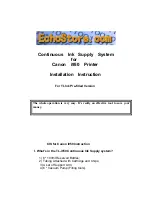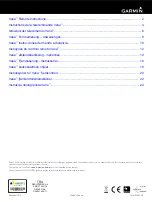
3
Sensor Location
There are three primary objectives when finding a suitable location for
the sensor.
1. Placing the sensor for proper occupancy detection.
2. Placing the sensor so the receiver in within radio range.
3. Placing the sensor so it can harvest adequate light energy.
Occupancy Detection Zone
• The sensor can not detect occupancy through solid objects including items
placed by the tenant such as file cabinets and book shelves.
• Do not locate the sensor near forced air vents as hot moving air will cause
the sensor to false trigger. Leave at least 4’ minimum between air vents
and the sensor.
• Incandescent lights can cause false trips when turning on.
• Movement perpendicular to the sensors detection zones create stronger
signals than movement directly towards or away from the sensor. Try to
locate the sensor so movement is across the detection pattern.
• Determine what kind of primary motion will trigger the sensor - walking or
hand movements. Hand waving and other small motion is only detectable
at 6’ (1.8m) maximum from the sensor location when mounted on a 8’
ceiling with lens A. Walking and large motion is detectable up to 18’ (6.1m)
with lens A from the sensor on an 8’ ceiling
• In offices and classrooms that measure 40’ by 40’ (12.2m by 12.2m) or less,
one sensor is often sufficient. Centrally located, the sensor picks up the
motion on the spaces peripheral
• larger spaces will require some planning before positioning the sensors.
Determine the type of traffic patterns, where occupants will be seated, and
where doors are located. Locate the sensor so the detection patterns do
not extend out doorways.
• Hallway applications are mostly walking traffic parallel with the detection
pattern so sensors should be mounted 30’ (9.1m) maximum from each
other as sensitivity will be decreased, see diagram.
• Open office space or other open floor plan designs require additional
sensors. Place the sensors in a grid adjusting for walls and furniture,
see diagram.
Radio Range
The MOS is a wireless transmitter intended to be used with EnOcean lighting
control products. Locating the wireless transmitters to work with the lighting
controller requires planning. Careful consideration should be made for locating
the controllers and transmitters based on the construction materials in the
space and possibility of tenant’s furniture disrupting the transmissions. Fire
doors, elevator shafts, stairwells, storage areas and any large metal products
create radio shadows and will disrupt wireless transmissions.


























